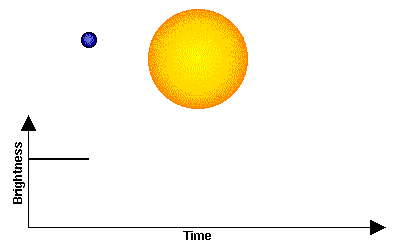Detection Methods
Scientists use several methods to find exoplanets. Some are more effective than others. Click on each method in the list to learn about it in more detail.

as a planet transits its parent star
Credit: NJIT
Astrometry: Looking for small changes in a star's position. The star's 'wobble' is caused by the presence of a planet.
Direct Imaging: Spotting the faint glow of a planet. All planets reflect light from their parent star. When using this method, the light from the planet's parent star must be blocked out.
Microlensing: Looking for the effects of a planet's gravity on the light from a more distant star.
Pulsar Timing: Radio waves from pulsars reach Earth as regular pulses. A planet orbiting a pulsar can create small, regular changes in the timing of the pulses.
Radial Velocity: Looking for shifts in the spectrum of light from a star. These are caused by the presence of a planet.
Transit: Looking for regular dips in the amount of light coming from a star. This is caused by a planet blocking some of the star's light as its orbit takes it between us and the star.
Some of these methods are biased towards finding certain types of exoplanets. For example, the transit and radial velocity methods. Both are better at finding large planets close to their stars than other kinds of exoplanets.

